Intermission Over
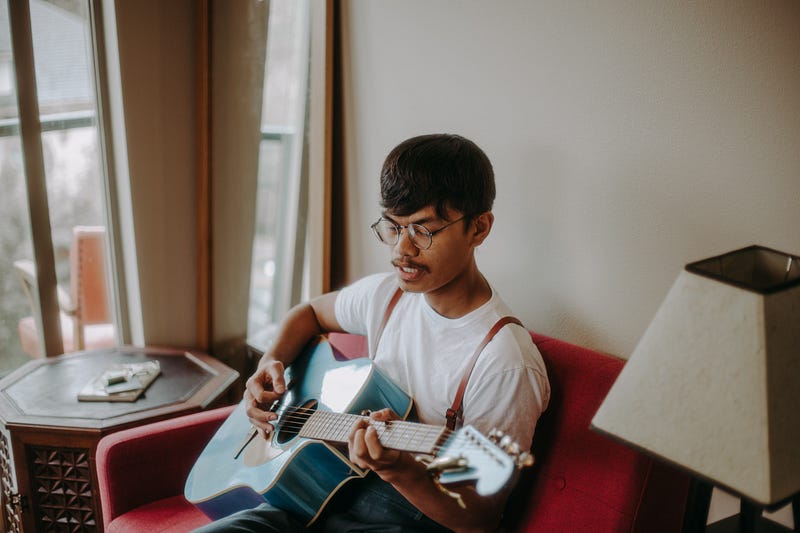
How musicians are returning to live performances after a long battle against the COVID-19 pandemic.
Story by Nolan Baker
A s the sun began to set behind the bustling streets of downtown Bellingham, Washington and the warm spring breeze turned into a crisp, biting wind, an alleyway that had been empty for the past year began to crawl back to life.
This alleyway, overgrown with weeds and gardens from various conjoining backyards, was unlike all the other ones in town. While birds sang in the cedar trees and the low hum of traffic droned on in the distance, a small crowd gathered around a makeshift stage, seemingly sawed out from the colorful backside of a yellow and teal-painted house.
This stage, like so many countless others across the country, has been collecting dust since last March. But that night, as actual, breathing people began to nestle in the grass and set up camping chairs, a special moment of relief, release and rebirth was about to take place.

At the Alternative Library, and at a growing number of venues scattered throughout Bellingham — from house shows to grandiose theatres — live music is starting anew.
On one windy May evening at an outdoor concert at the Alt Library, three performing artists — Chicago-based singer-songwriter Tessa O’Connell, Alaska-born pop singer Roland Olayvar and Seattle-based projectionist and singer SwanDadd — shared their feelings on playing live music after more than a yearlong absence. These three artists have strikingly different styles of music, but all were relieved to be back doing the thing they love most: performing for a live audience.
They illuminated what it means not only for themselves and the local arts community in Bellingham, but for the larger culture of a society that’s been stuck inside for a year.

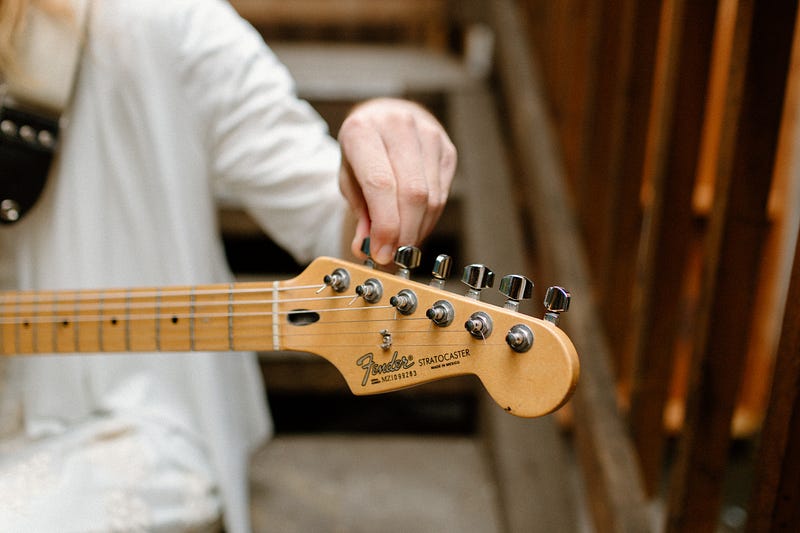
“On the one hand it is kind of a lot. Honestly, on stage I was pretty anxious and just couldn’t stop thinking, ‘There are people here,’” Sean Dodd, who goes by the artist name SwanDadd said.
“But also, it’s really amazing because it’s like not getting to fly if you’re a bird for a year. You want to do the thing you do.”
On March 16, 2020, in response to the alarming rise in COVID-19 cases throughout Washington state, Governor Jay Inslee issued an emergency proclamation that immediately closed all bars, restaurants and entertainment facilities. Inslee’s order to close public spaces, which included gyms, places of worship and barber shops, was only supposed to last two weeks. Month after month, as cases surged in Washington and across the globe, the ban on public gatherings was extended.
In the spring of 2020, it was a common method of virtual small talk to ask if anyone in your Zoom breakout room had a concert for the summer canceled. Dozens of Western Washington University students were holding out hope for big-ticket acts like Australian psychedelic rock band Tame Impala to continue with their set date for Aug. 7, 2020 at the famous Gorge Amphitheatre in George, Washington. But not even the biggest-selling acts could skirt by state and federal guidelines, which banned outdoor gatherings of more than 50 people. The Aug. 7, 2020 date was rescheduled to Aug. 6, 2021, and then again pushed back to Sept. 10, 2021.
Although these big-name acts could weather the storm of canceled tours and rescheduled shows, smaller local acts have had to work harder than ever to stay afloat and come out of the pandemic unscathed.
Singer-songwriter Tessa O’Connell said she typically plays with a full band to accompany her. Now, she is playing solo shows due to space and logistical restraints brought on by the pandemic.
“Ideally,” O’Connell said through a sigh, “I’d be gigging with a full band, instead of just these really stripped-down versions of my songs. But it’s hard now.”
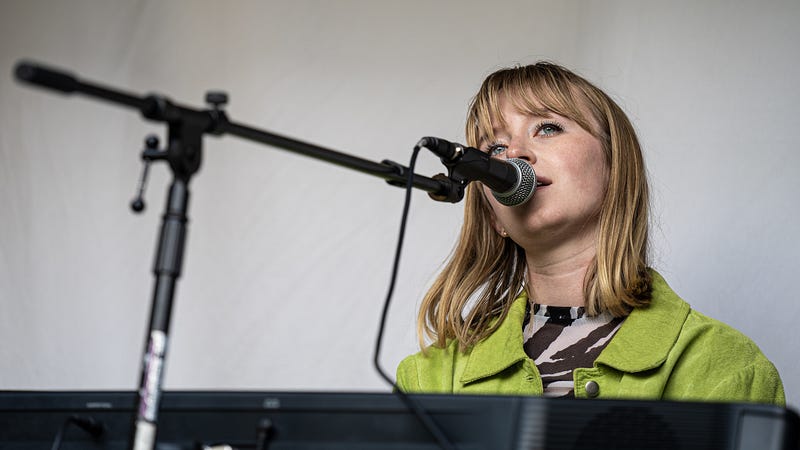
O’Connell, who grew up playing piano and studied music composition and theory in college, said she isn’t used to doing gigs alone. She would take whatever she could in order to perform in front of a live audience again, even if it meant playing without her bandmates.
For SwanDadd, with the pandemic denying any chance to play live shows, they decided to host livestreamed performances for a virtual audience. Through their independent music label, Sadd Dadd Records, SwanDadd began to focus more on livestreaming concerts, creating music videos and finding ways to engage people with music through mediums that don’t require in-person contact.
“I was a little worried that people would get used to doing the stay-at-home show and just livestreaming music from your room,” they admitted after their performance. “But it’s nice to get out there again and wean yourself off of that.”
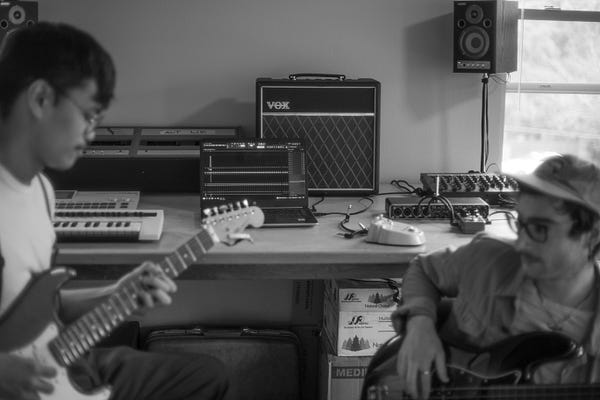
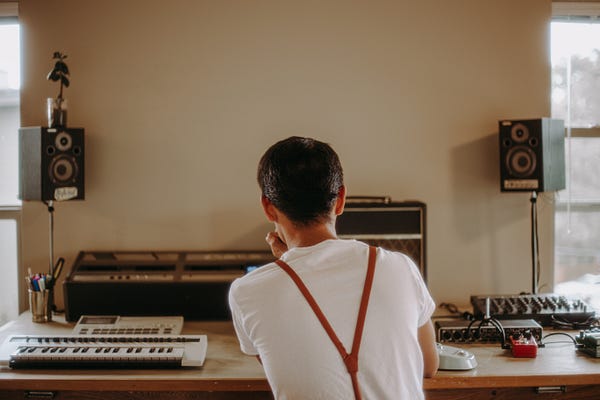
Roland Olayvar, who works as the live sound engineer for the Alt Library when he isn’t performing, professed there were some cobwebs to shake off. Olayvar’s last live gig was in 2020, and he acknowledged that while the energy of live concerts hasn’t changed since before the pandemic, his performance might have.
“This was my first show in 11 or 12 months, so it was definitely weird,” Olayvar said. “Everything felt natural and normal, just kind of hard to get back into. The only thing that felt different was how rusty I was. In 2019 I was playing two or three shows a month, and then everything just dropped.”
Olayvar might be his own biggest critic. The crowd at the Alt Library lauded over his thoughtful and direct lyricism that evening.
“Roland’s a truth-teller!” one audience member shouted during his first song. Olayvar flashed a quick smile and continued on, strumming and singing like he never took a hiatus.
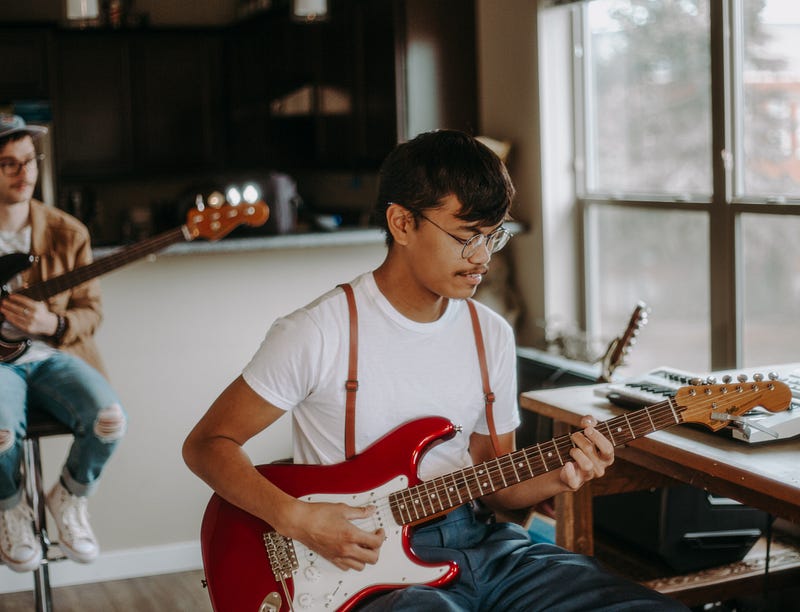

For his next song, he insisted that the crowd sing along for the chorus and taught everyone the lyrics before starting. By the time it was over, every person was singing along. The sound of dozens of synchronized voices echoed across the brick walls of the alleyway. It was probably the first time anyone had done that since the start of the pandemic. Olayvar was not rusty, to say the least.
Bellingham has been home to a vibrant music scene for years, but never before has this funky little college town been so devoid of artistic performances for so long. Historic venues like the 94-year-old Mount Baker Theatre were forced to shut off their marquee lights in March of 2020. Independent venues like The Firefly Lounge closed their doors for good in May due to the looming financial implications of a year without live music.

But today, as vaccines are being administered to millions of Americans and public restrictions are slowly eased, the performing arts scene is yet again blossoming.
During that brisk evening show at the Alt Library, it was hard not to notice the signs of spring in the air. The backyard venue was delightfully overgrown with shooting grass, countless wildflowers and weeds, and the air was thick with pollen.
While O’Connell sang, a lone bird sitting high atop a nearby tree seemed to call right back to her after every line. O’Connell’s fluttery, light soprano voice complemented the bird chirps exquisitely, immediately relaxing her and the audience.
“I was very nervous anticipating it,” O’Connell said of playing shows again. “But then when I actually got up there, remembered all my lyrics, remembered all my chords, it all came back in a way that I had never felt at a gig before.”
O’Connell admitted to the audience that the pre-show nerves are a little stronger when you haven’t played in front of people in a while.
“It’s hard to really put my finger on it. There’s usually a sense of nerves that come with the gig,” O’Connell said after the show. “But this time, it was like there was a bit of relief, too, with just the idea of playing again.”


For SwanDadd, they shared similar sentiments of anxiety due to the sharp adjustment from a period in isolation to suddenly playing in front of a live audience.
“I think a big thing for COVID-19 for a lot of people is that now, when you’re in a social situation, it’s kind of like you almost can’t handle as much as you used to,” they said. “In the same way that if you don’t eat for a while your stomach gets smaller.”
Looking out into the sea of audience members during SwanDadd’s setlist, you could tell that people were starving for that interpersonal connection again. As they swayed, danced and sang along to the music, it was easy to feel a sort of collective energy that cannot be replicated through screens and recordings.
When SwanDadd had to borrow Olayvar’s guitar because their own couldn’t hold a tune, SwanDadd remarked on how kind and welcoming the audience was to technical difficulties that might otherwise have thrown off the entire flow of the set.
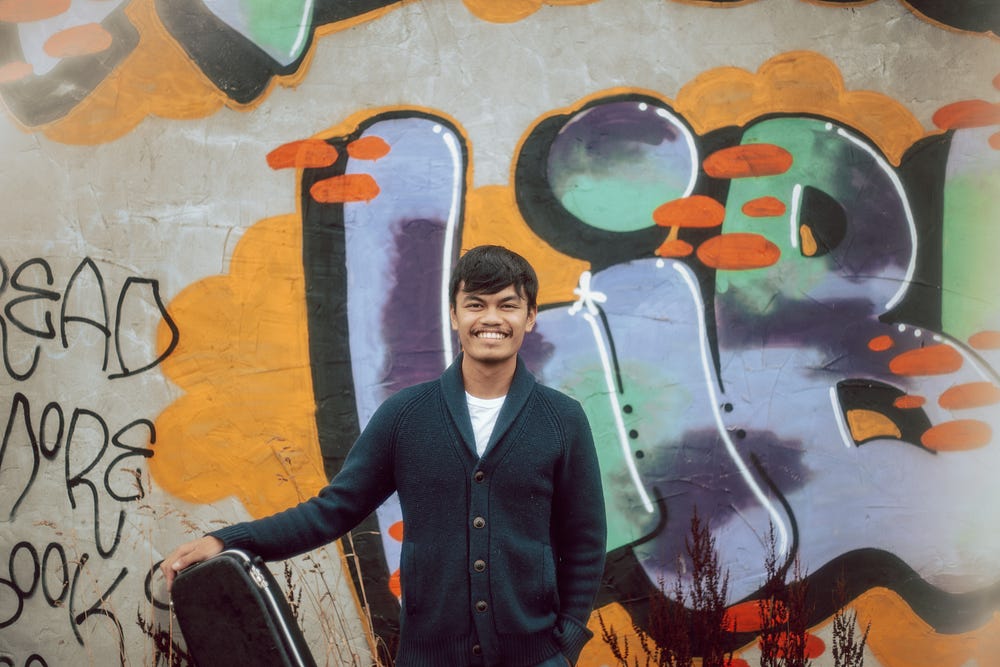

“Thanks for making me feel like it’s OK to screw up,” they said, before launching back into their song.
As the lyrics and notes harmonized with the natural sounds of spring in this back alleyway in downtown Bellingham, it felt as though winter was receding for sunnier days while the community as a whole was growing into a new, post-pandemic, normal.